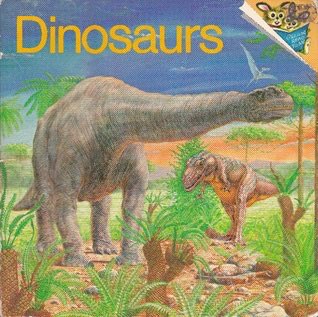

The story of how we got there is often in the minds of many summarized as such: “Often, this is about as far as the discussion goes: an immense rock smacked into the planet and myriad species were summarily snuffed out. Contorted carcasses, dappled with cracked skin, will soon dot the razed landscape.” Carpets of vegetation will be reduced to ash. “In a matter of hours, everything before us will be wiped away.

The next day that world is mostly gone, the fascinating prehistoric monsters dead and the world eventually becoming the place for mammals, with only tiny feathered dinosaurs - yes, think about that next time a pigeon poops on you, and a hummingbird is an ex-dino just like a chihuahua is an ex-wolf - living on, while their mighty cousins whose skeletons are breathtaking and majestic and command our imagination remained trapped forever behind the Cretaceous–Paleogene (K–Pg) boundary.

rule the world, shaping itself their needs and creating an ecosystem in which the world of the Cretaceous era thrives. One day enormous colossal herbivores and carnivores a.k.a. Sixty-something million years ago the world irrevocably changed. “Beginnings need endings, a lesson that we can either hold carefully or that we can deny until it finds us.” Black is pioneering a new narrative prehistorical nonfiction." ― Steve Brusatte, New York Times bestselling author of The Rise and Fall of the Dinosaurs "This is pop science that reads like a fantasy novel, but backed up by hard facts and the latest fossil discoveries. But this worst single day in the history of life on Earth was as critical for us as it was for the dinosaurs, as it allowed for evolutionary opportunities that were closed for the previous 100 million years. In the terrible mass extinction that followed, more than half of known species vanished seemingly overnight. An asteroid some seven miles across slammed into the Earth, leaving a geologic wound over 50 miles in diameter. The cause of this disaster was identified decades ago. Tyrannosaurus rex will be toppled from their throne, along with every other species of non-avian dinosaur no matter their size, diet, or disposition.

In a matter of hours, everything here will be wiped away. A Triceratops horridus ambles along the edge of the forest. It’s a sunny afternoon in the Hell Creek of ancient Montana 66 million years ago. Picture yourself in the Cretaceous period. Life’s losses were sharp and deeply-felt, but the hope carried by the beings that survived sets the stage for the world as we know it now. In The Last Days of the Dinosaurs, Riley Black walks readers through what happened in the days, the years, the centuries, and the million years after the impact, tracking the sweeping disruptions that overtook this one spot, and imagining what might have been happening elsewhere on the globe. "This is top-drawer science writing." ―Publishers Weekly, starred review Winner of the AAAS/Subaru Prize for Excellence in Science Books!


 0 kommentar(er)
0 kommentar(er)
